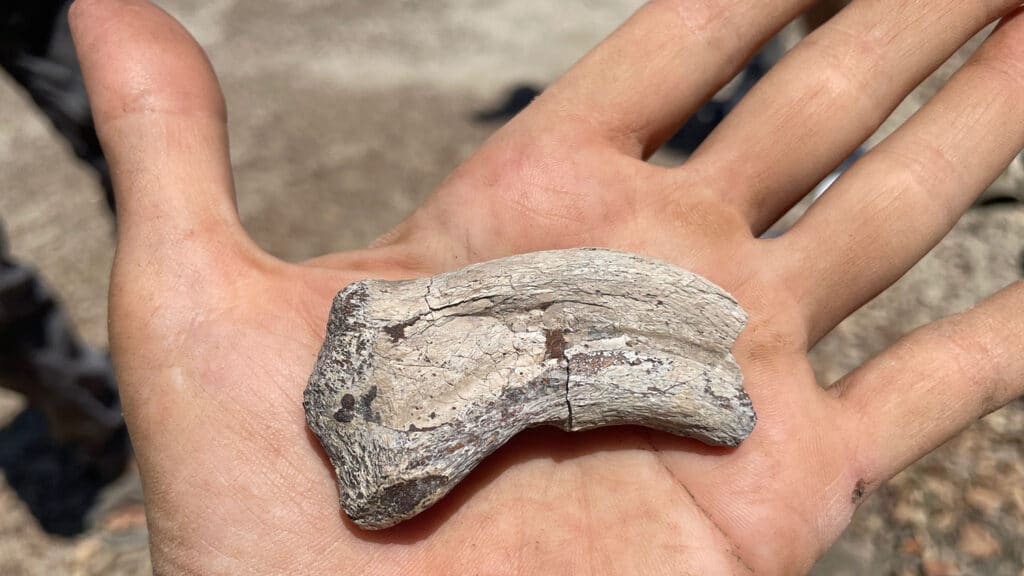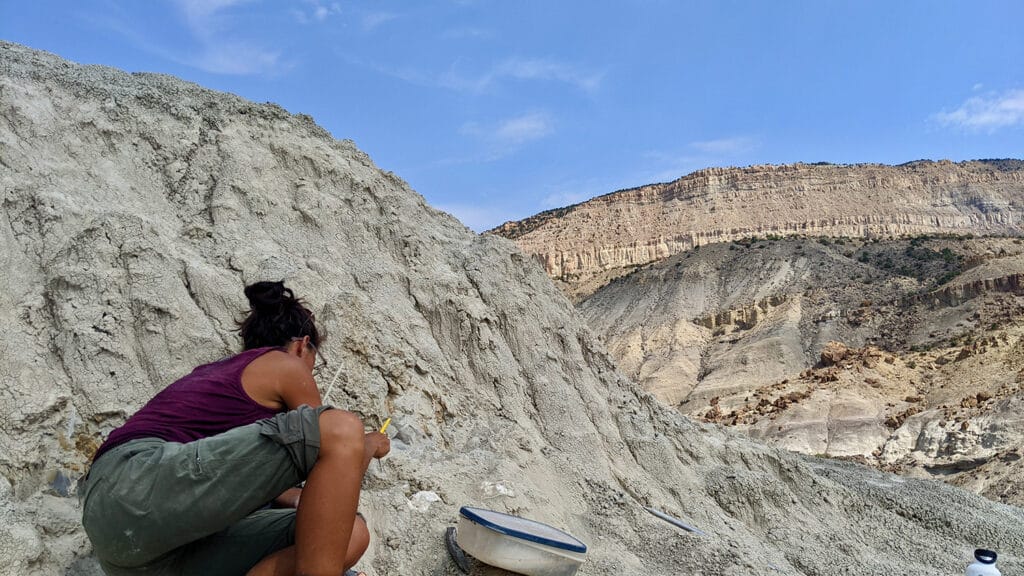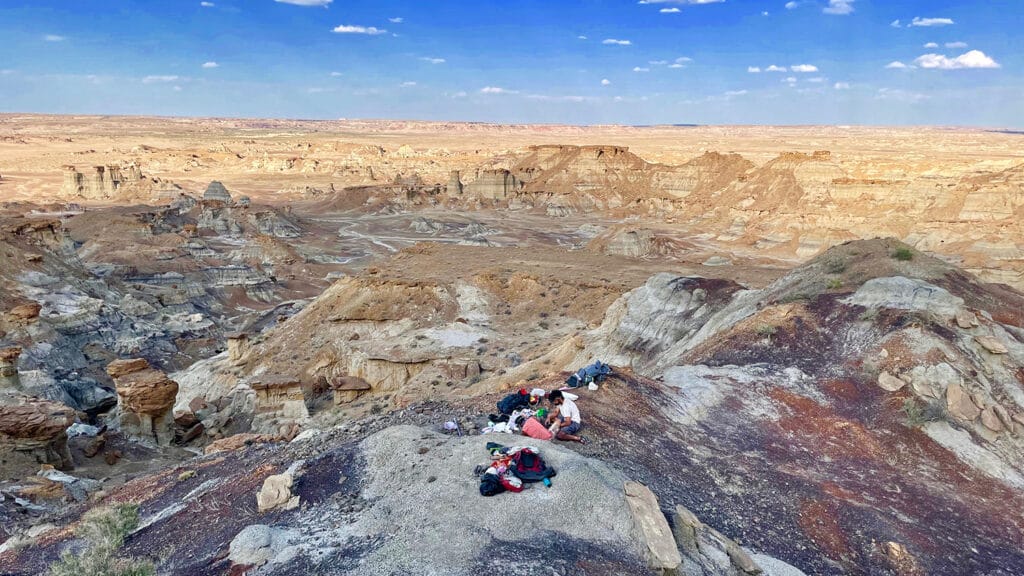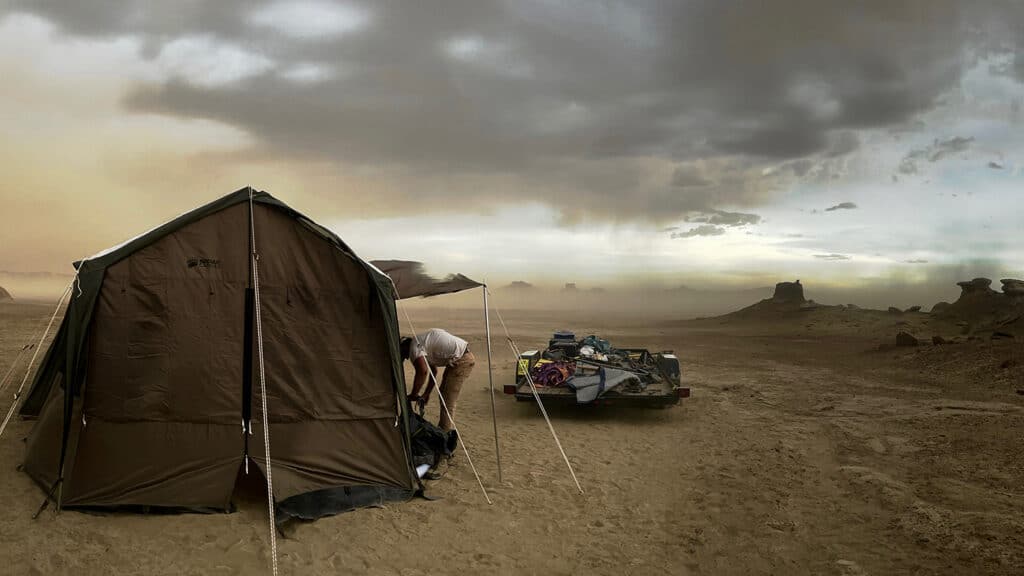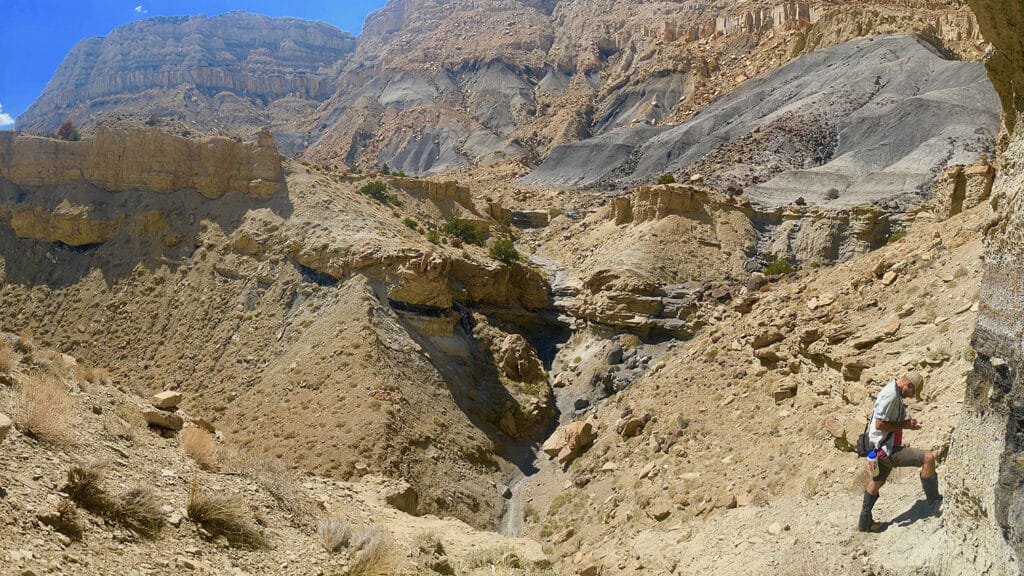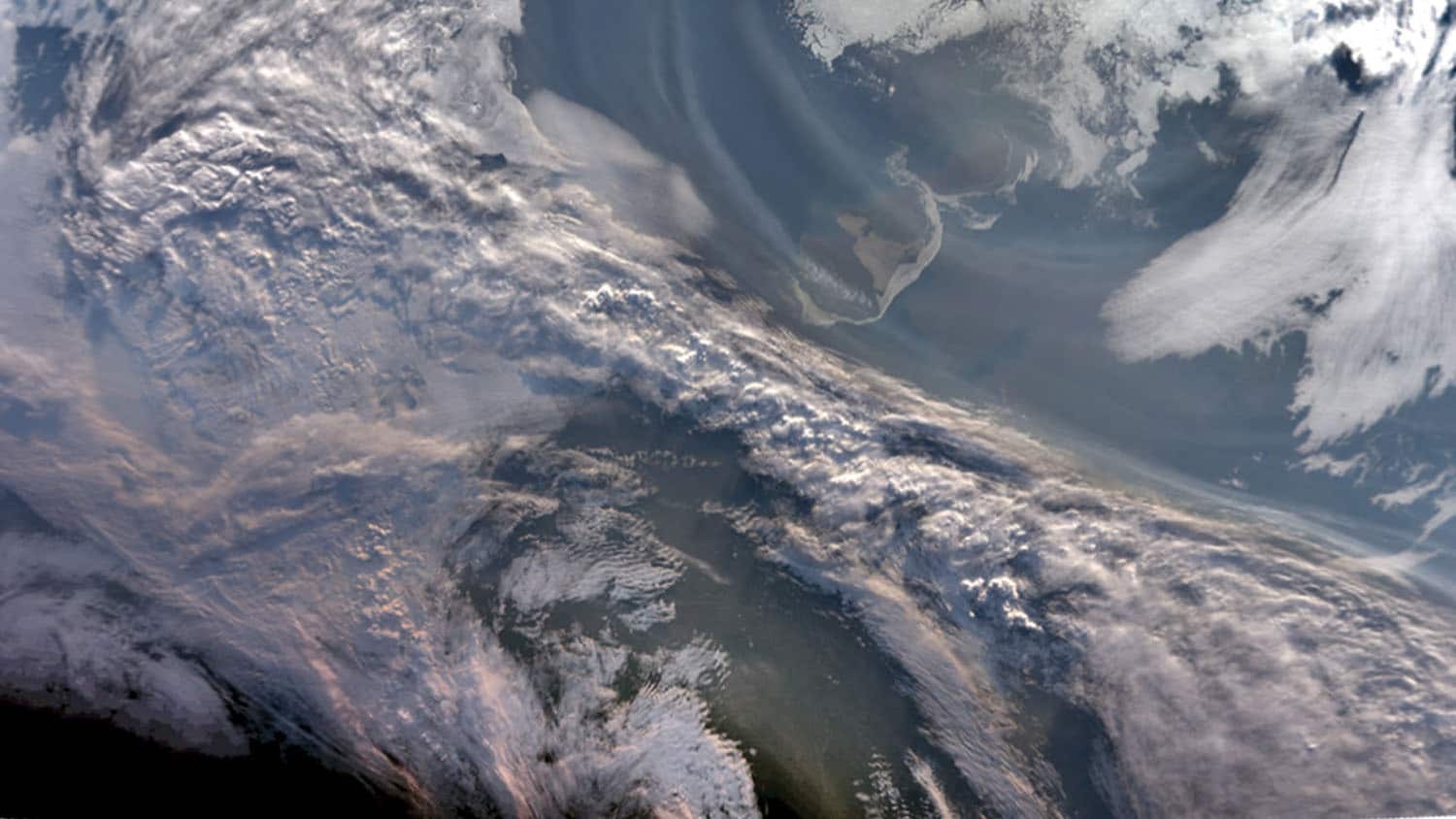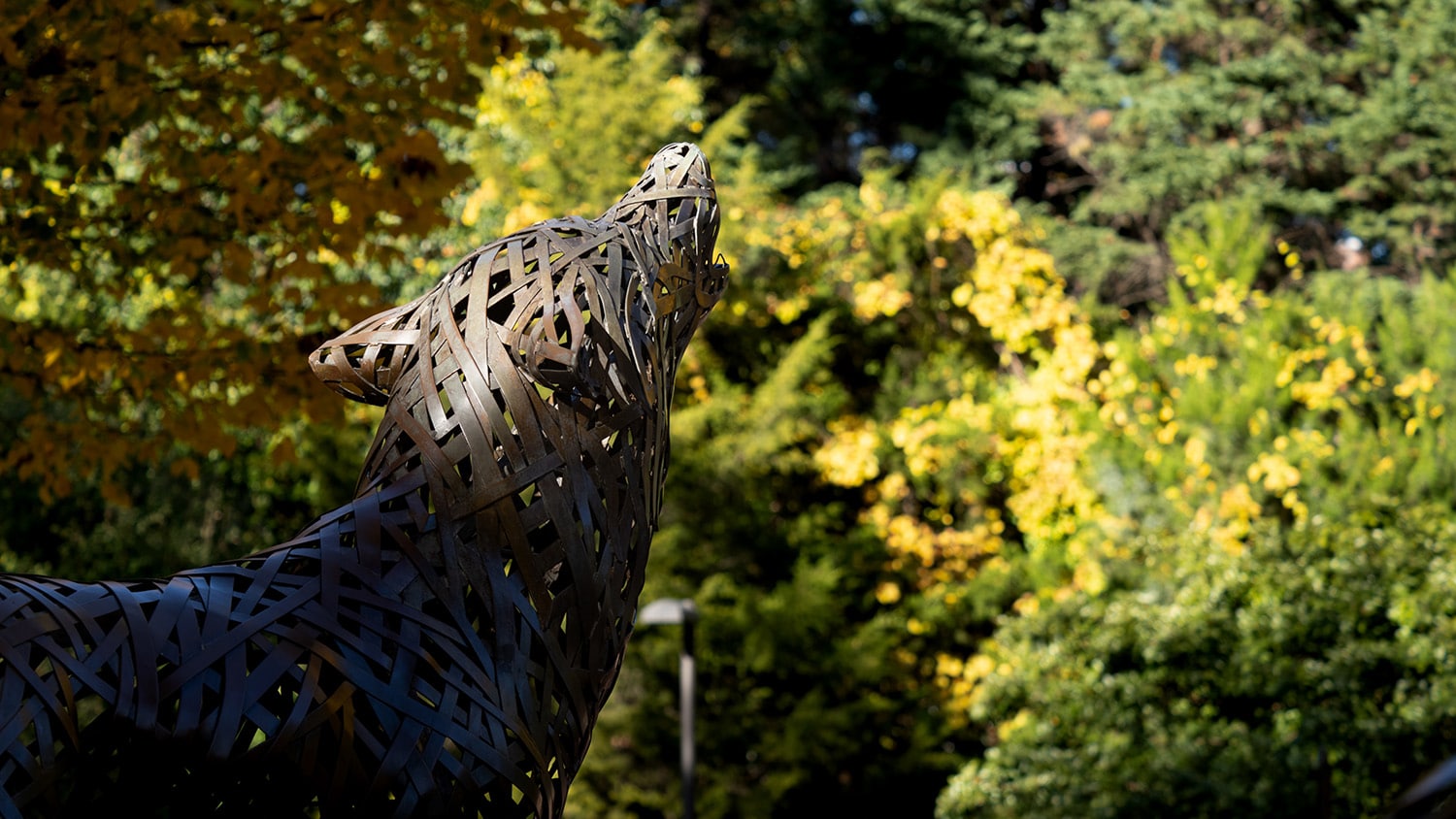Expedition Extreme: A Summer in the Field With the Zanno Lab
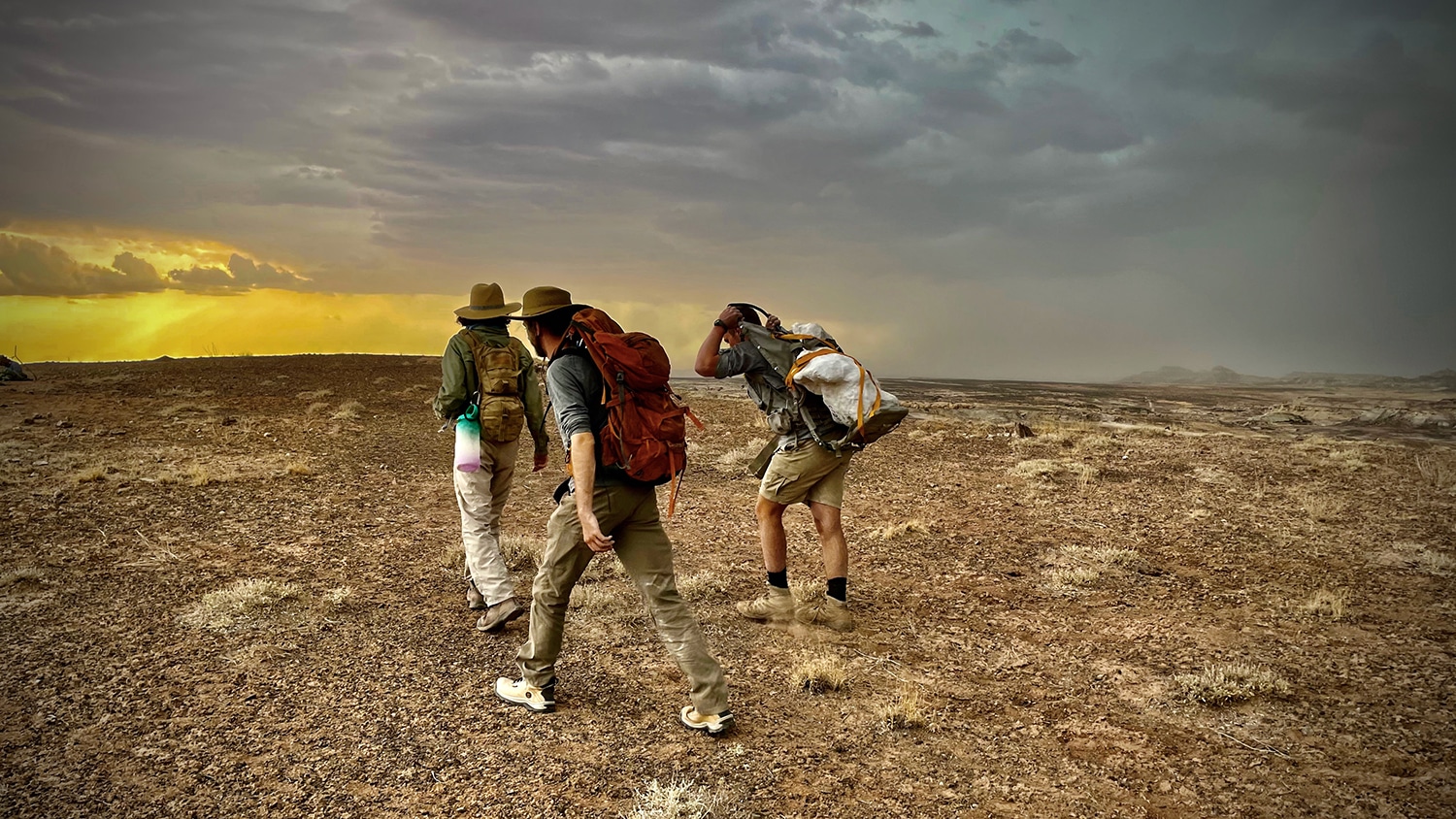
This is a guest post by Lindsay Zanno, associate research professor in the Department of Biological Sciences and head of paleontology at the North Carolina Museum of Natural Sciences.
This summer, the Zanno Lab in the Department of Biological Sciences geared up for our longest field season yet, logging 90 consecutive days of fieldwork across the American West. Our five base camps were spread across the deserts of New Mexico, Utah, and Montana, allowing our crews to explore 100 million years of geologic time for dinosaurs and other ancient animals.
Weather-wise, this was a summer of extremes. We kicked off in New Mexico, where we were pummelled by nightly sand storms amplified by the record drought — tents were shredded, meals uncooked, and patience worn. At the famous Crystal Geyser Quarry in central Utah, site of our Paleontological Field Methods course (BIO 325), the temperature spiked to 120, and we laughingly recorded 100-degrees at midnight, while desperately trying to get some shut-eye and stay hydrated. (Our 15-person team burned through 40 gallons of drinking water each day!)
In late July, we moved to the San Rafael Swell in Utah, where severe flash flooding wreaked havoc on the landscape, miring our vehicles, muddying our quarries and producing Mount Olympus-style lightning storms. That same lightning ignited a forest fire by our camp, forcing us to consider the prospect of a hasty middle-of-the-night evacuation. Soon after, a blanket of smoke arrived from the massive fires in California and Oregon, blotting out the sun and enveloping us in a surreal cast of haze.
The best part of all this extreme weather? Incredible double rainbows abounded, and we watched with awe as they slowly arched over the landscape.
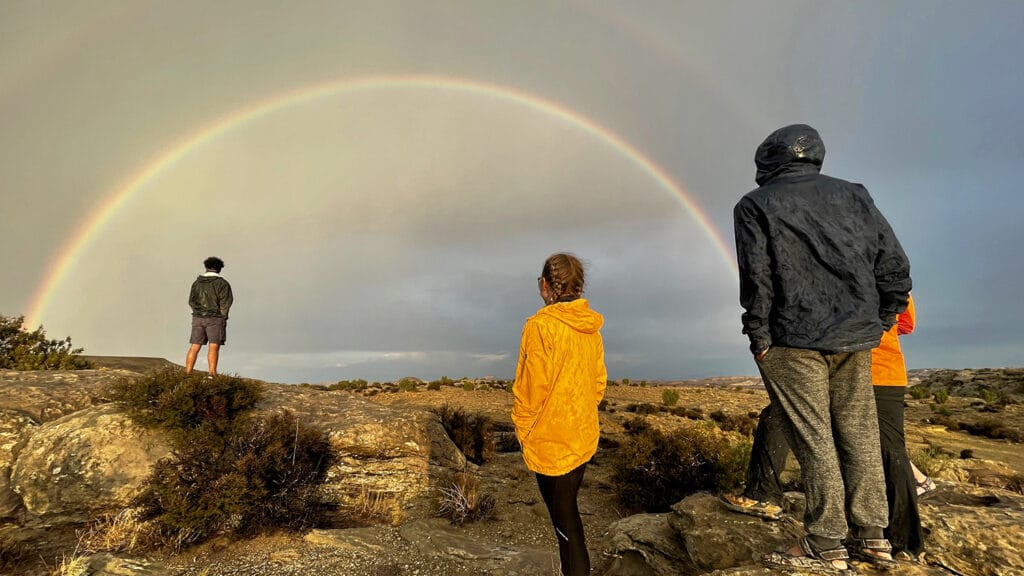
Data-wise, the trip was an enormous success with its own extremes. We collected five-foot-long sauropod (long-neck) dinosaur ribs laying next to penny-sized bones of feathered dinosaur hatchlings. We discovered the skeletons of duckbill and horned dinosaurs and their tyrannical predators. We found new species and collected many new bones from old friends.
Our most unusual find was a dinosaur buried within a volcanic ash layer. The cutest? That’s got to be the remains of a baby Triceratops, discovered, as usual, as we were packing up to head home. We also collected more than 100 specimens for radiometric dating, chemostratigraphy and paleoclimate reconstructions, adding key data on the Cretaceous Thermal Maximum, one of the hottest intervals in Earth’s history. We wrapped up the season with more than 800 specimens in tow and having trained a multitude of graduate and undergraduate students from universities around the United States.
During our expedition, we invited the public to follow our discoveries through four livestreamed events from the field, including a Q&A in July as part of the NC State course “Wicked Problems, Wolfpack Solutions: Global Change.” We also chronicled our adventures in real time on Twitter and Instagram. To learn more about our National Science Foundation-supported research studying climate change in the Cretaceous and to watch archived interviews with the crew live from the field visit www.expeditionlive.org.
